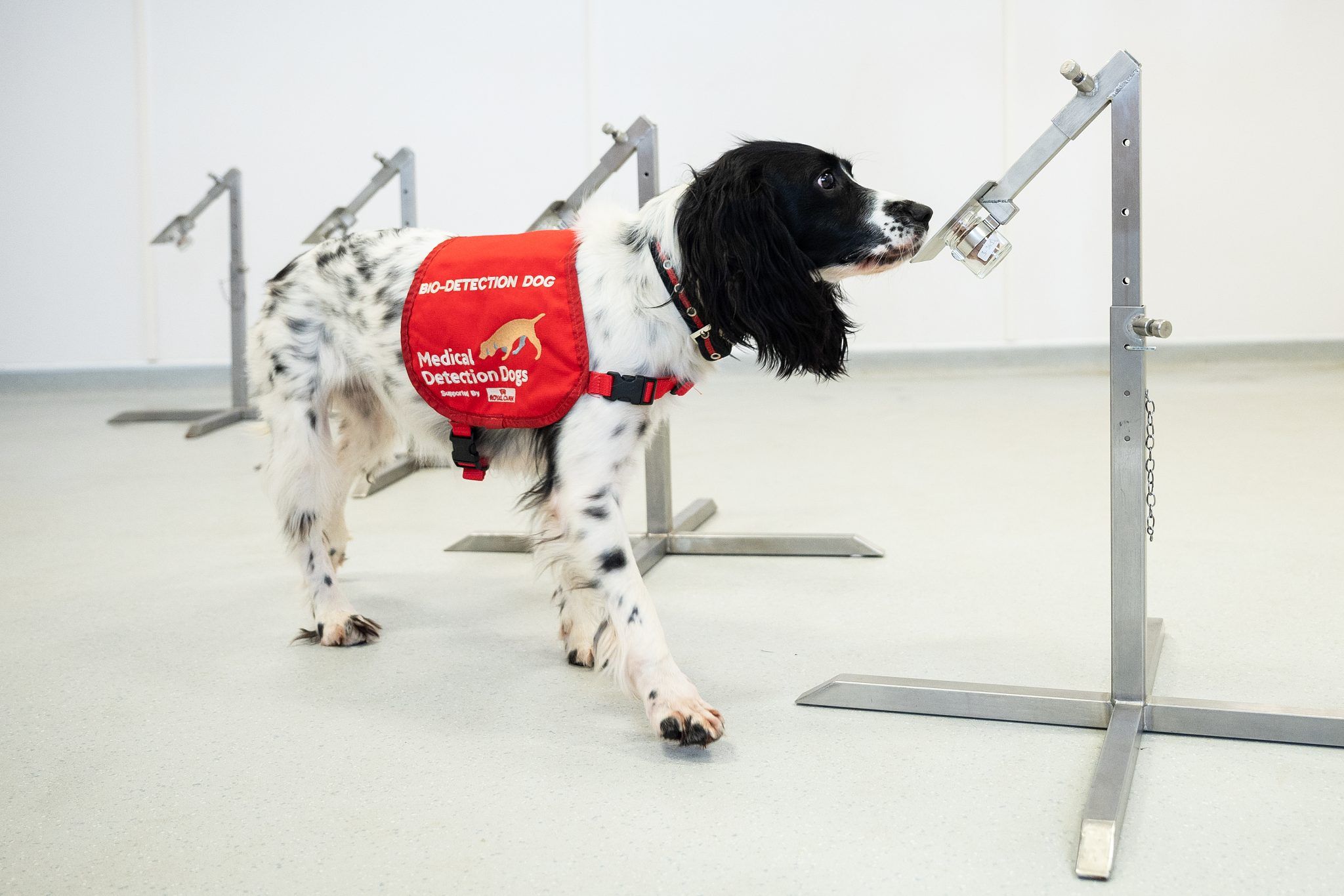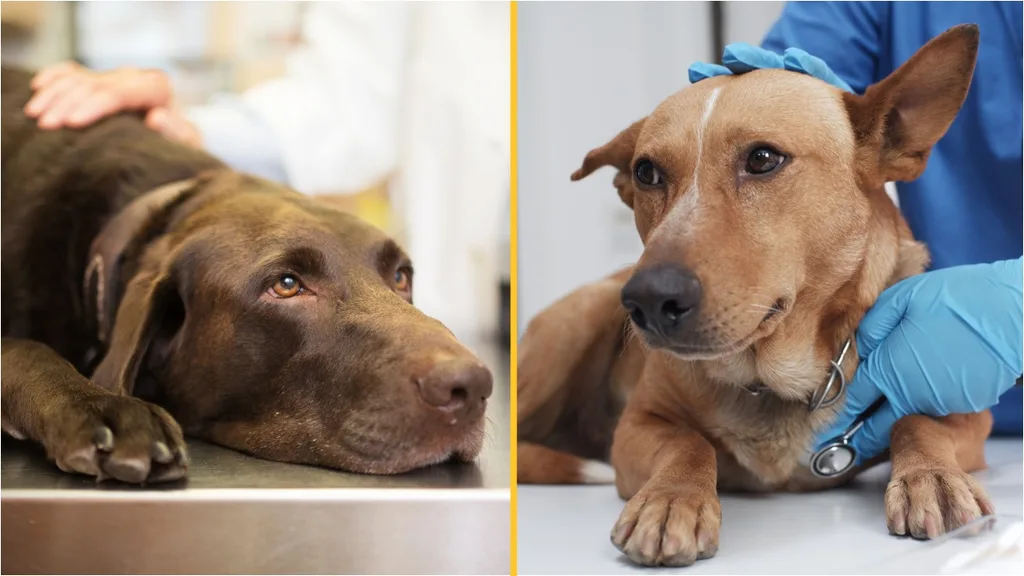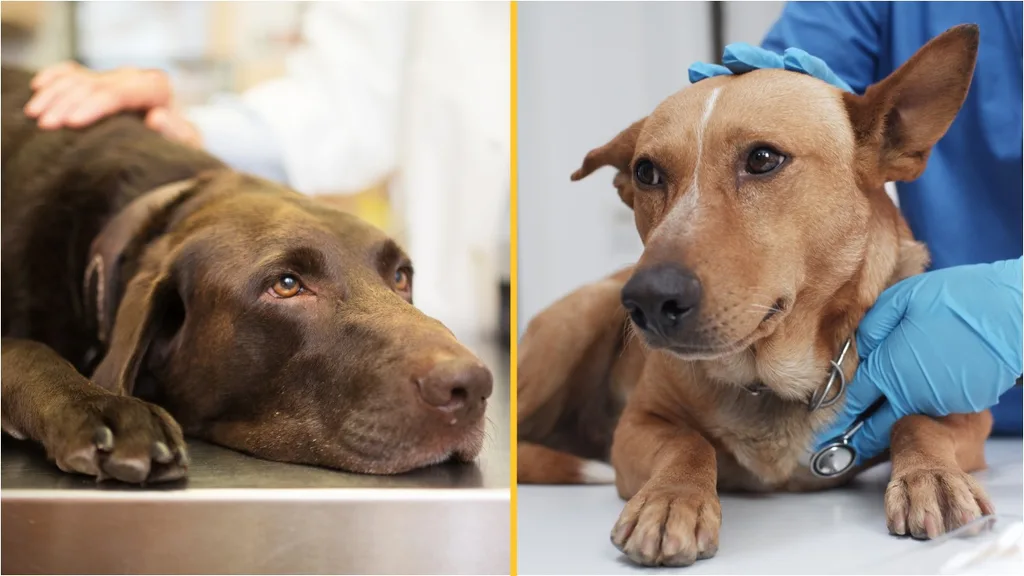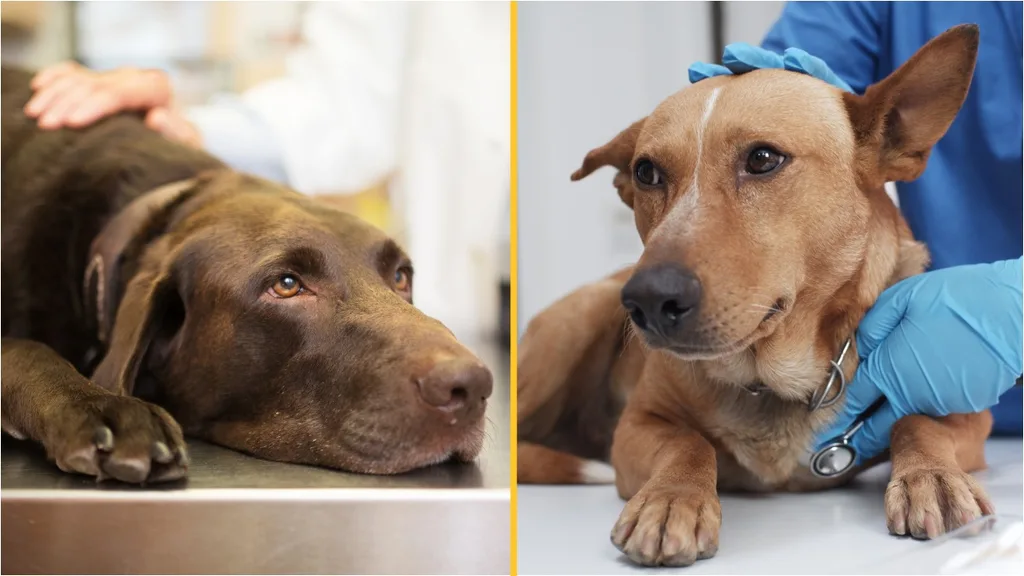Four dogs from Belfast completed the 10 months long training
A study has found that dogs are able to detect stress in a person’s breath or sweat to an accuracy of almost 94 percent.
Researchers from Queen’s University Belfast and Newcastle University found that the dogs were able to detect psychological stress in an individual’s breath and sweat with an accuracy of 93.75 percent.
The results, published in the journal PLOS ONE, show the physiological processes associated with stress produce changes in compounds flowing from breath, sweat, or both, and that dogs can detect these changes.
A total of 20 dogs were initially recruited for the study, but as training progressed some were eliminated for a number of reasons, including simply losing interest in the training.
But four made it to the end, completing an hour of training each week over the course of about 10 months.
The four canines were a male cocker spaniel, a female cockapoo, and two mixed-breeds dogs, one male and one female. They ranged in age from 11 to 36 months.

Clara Wilson, the lead author of the study, told Medical News Today: “It was fascinating to see how able the dogs were at discriminating between these odors when the only difference was that a psychological stress response had occurred.”
She added that the training was “very extensive, as the premise was that the dogs needed to be consistently able to discriminate between two very similar human odors with known differences at above 80% correct for multiple sessions.”
The training involved the pooches first identifying one of three containers that had food and a sweat sample in.
Researchers then removed the food, simply presenting the animals with three ports. One port held a human sweat and breath sample, and two others held blank samples. The dog had to identify the one with the sample in.
Then, human participants provided sweat and breath samples along with a self-report questionnaire about the level of stress they were experiencing at the time, before completing a mental arithmetic task and providing another sample once completed.
The dogs were then presented with a sweat and breath sample from a stressed participant and two blank samples.

In the next phase, researchers filled one port with a sweat and breath sample from a stressed participant, another port with a sweat and breath sample taken before the participant underwent the mental task, and a blank.
Each dog completed 10 phase 1 trials and 20 phase 2 discrimination trials. For the study, the researchers focused on the phase where dogs had to discriminate between the stressed and baseline samples.
Overall, the dogs detected the stress sample in 93.75% of the trials. Individually, they ranged in performance from detecting the stress sample 90% to 96.88% of the time.
It’s the latest way that scientists have been able to use a dog’s incredible sense of smell to detect changes in human health.
Canines can already be trained to become diabetic alert dogs and detect changes in a person’s blood sugar, or to detect people with malaria parasites by their odour.
It is even possible for dogs to be trained to detect lung cancer in a person’s breath.
Related links:
- Angry neighbour tapes poo to wall in threat to owner who kept letting dog s**t in their garden
- Party planners claim to have created the world’s first stag do – for dogs
- Woman builds AI system to observe her cats’ poo















































